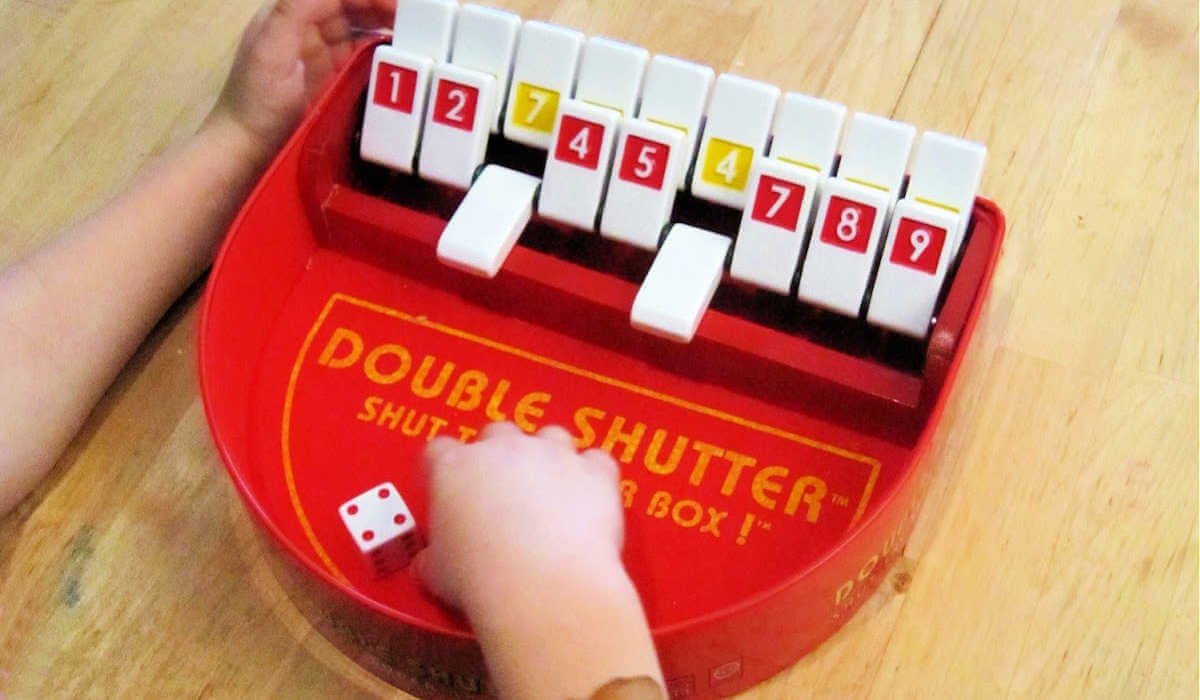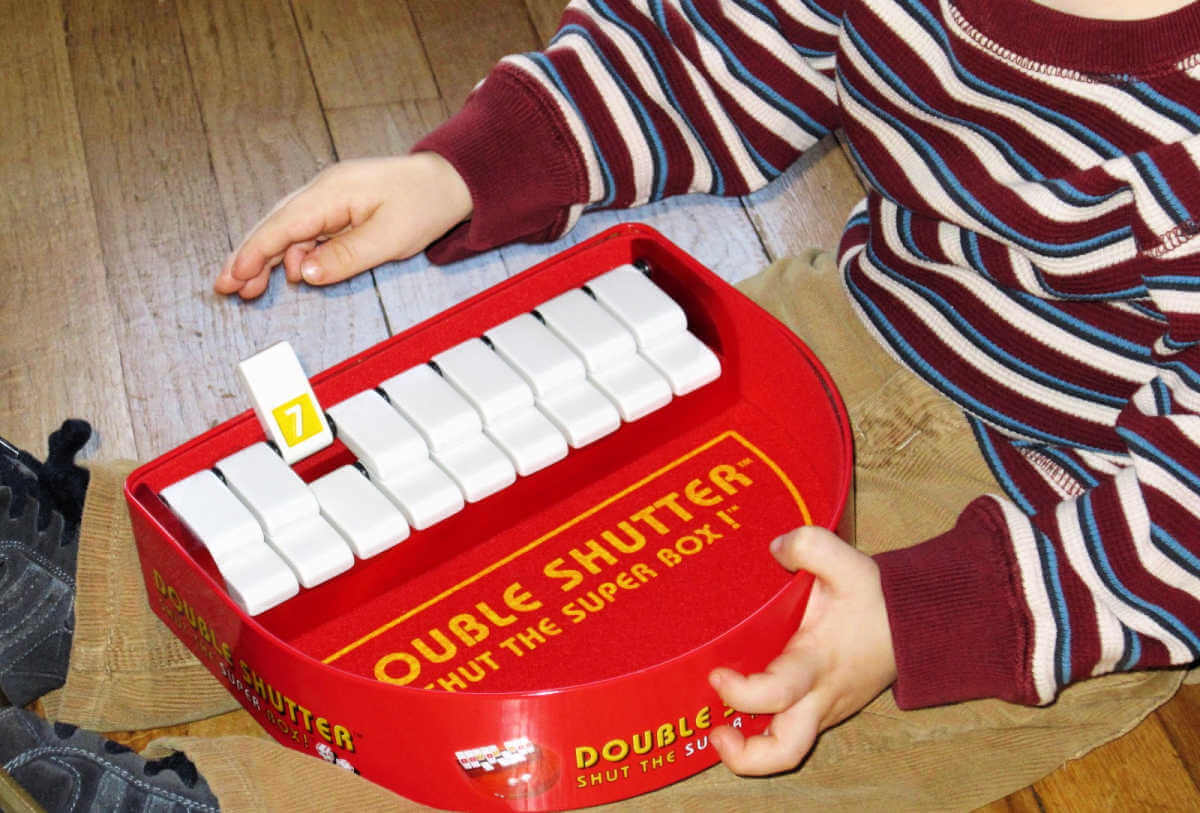This easy math game for 5-year-olds repurposes a traditional game for at-home learning of pre-math skills like number and quantity recognition and counting.
We've always enjoyed finding playful ways to modify pre-made games from our games closet for math practice. In this case, my 5-year-old and I pulled out Double Shutter, a version of a traditional game, Shut the Box, and used it to help lay the foundation for learning the basics for addition. Note: you don't need Double Shutter to play, see our variation, below!

Note: this post contains affiliate links that earn commission from qualifying purchases.
Easy Math Game Rules
As you saw in our fun kindergarten number matching game we like to invent our own math game rules using simple materials! For this easy math game we made up our own preschool and kindergarten-friendly rules for Double Shutter.
Variation: If you don't have Double Shutter, use our printable version of Shut the Box. Instead of flipping tiles, cross of the numbers on the number lines.
With it's fun, flippable numbers and dice, Double Shutter satisfies every young child's desire to touch and manipulate everything!
Instead of playing the game by the original rules, I explained the basic concept that players role the dice and "shut" the numbers according to the combination rolled. We then modified the game by removing the strategic component and simplifying the addition.
Read more about how we repurpose games for toddlers and preschoolers!
For example, if he rolled a 5 and a 3, we counted the dots and said "5 plus 3 equals 8". Then he could shut tiles 5 and 3 or tile 8. (If this were the actual game, he could shut any combination of numbers that equaled 8). If he rolled a combination of numbers that were no longer visible on the available tiles, instead of ending the game as in the original rules, he rolled again until he got numbers that worked.
Math Skills Practiced

Even without the competitive aspect of game play, repurposing Double Shutter for a young audience helps them practice valuable skills needed for future math success. Add it to your list of playful after school math activities.
Number and quantity recognition. He matched quantity (five dots) on the die face to the numeral (5) on the tile. Suggestions: after playing this game your child will enjoy learning how quantity is related to shape with our "Oodles of Noodles" math craft.
Learning the concept of addition. A 5-year-old may not remember that 5+3=8. However, he is observing that two different quantities put together will create a new quantity. Once your child is learning their addition facts, use this addition and subtraction dice game to practice!
Fine motor skills. This one isn't really a math skill per se, but fine motor skills are necessary for manipulation. Little fingers must work delicately to shut the tiles without disturbing the tiles next to or behind them. Much future math practice will involve using manipulatives for hands-on learning and the more skillfully they can can handle them, the better. Try these lacing activities for more fine motor practice.
My 5-year-old really enjoyed playing the math game and we took plenty of time to count, find the numbers and talk about which tiles to shut. Working side by side with a parent or other caring adult creates a bonding experience that means the practiced math skills are more likely to skick!
More fun DIY math games to play together:
- Lu-Lu dice game (also great for recognizing quantity!)
- Cooperative math dice games
- Math Tic Tac Toe



Natalie F says
I love how you modified this game to accommodate for a younger player. Soon he will be able to play a full version with his big brother! Thanks for co-hosting Afterschool!
Anna@The Measured Mom says
Love your game posts, Erika!